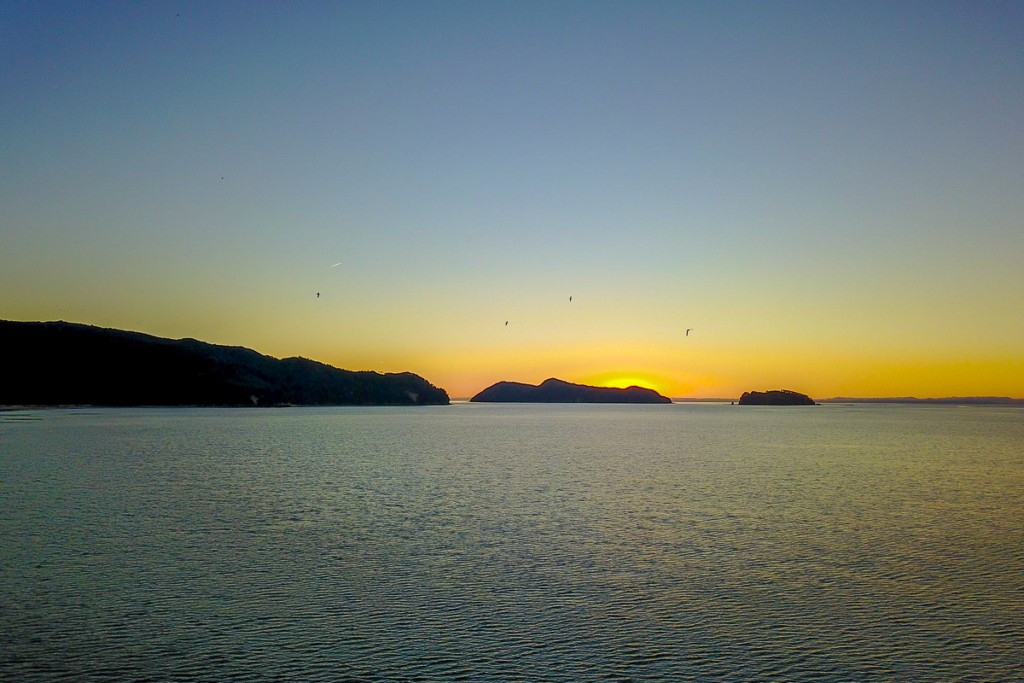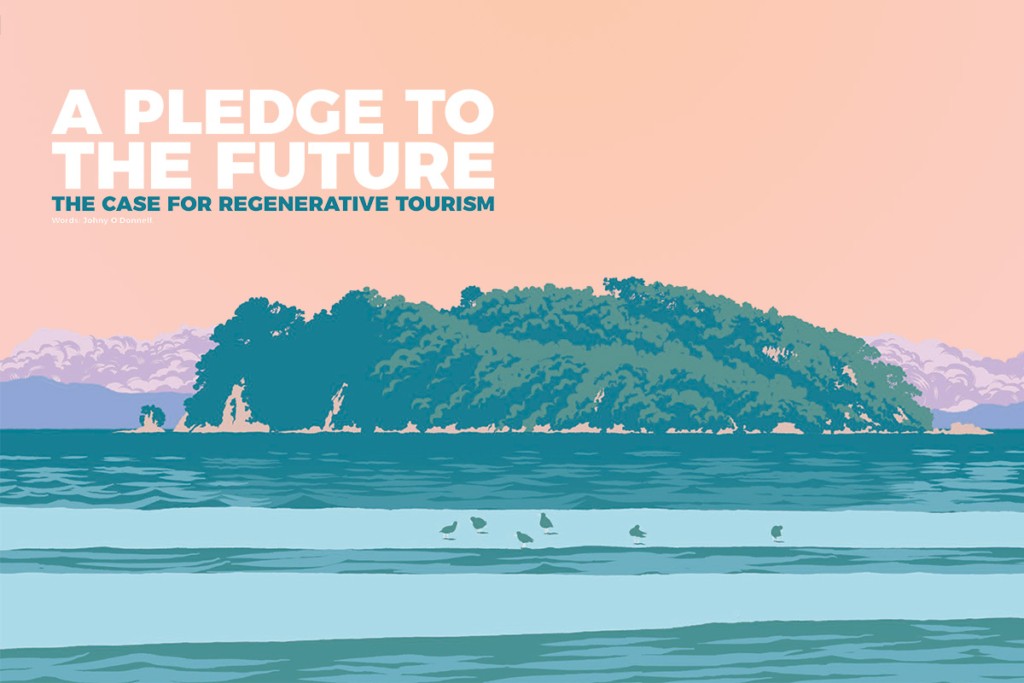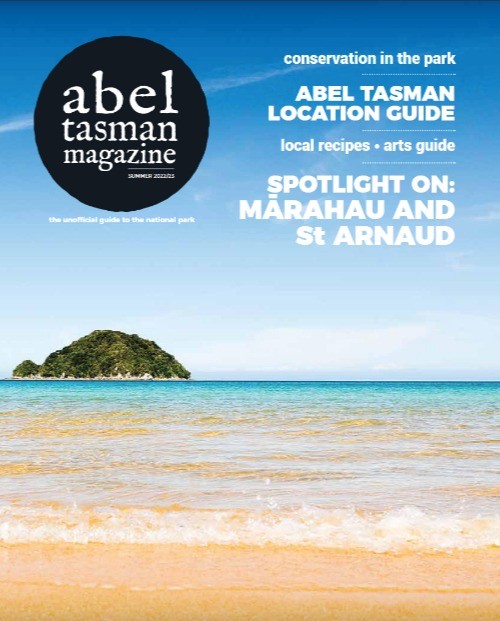In my experience, there are fewer things more natural than talking about sustainability and conservation with tourism operators. Whilst the visitor sector has been subject to plenty of criticism in recent years, I have always found myself a tad defensive of our local visitor industry in and around the Abel Tasman National Park.
Much has been said in recent years about the need for regenerative tourism. Tourism that actively gives back to the environment and the local community, rather than the more dated view of sustainability as an after – thought or worse still a “nice to have”.
If you’ve been a reader of this magazine since its inception, then you’ll know that the Alborn family of Mārahau who is
behind this magazine have been on a journey to improve the sustainability of their tourism operations which range from accommodation and a restaurant to water transport and activities. I am very proud of the fact that despite the challenges of the pandemic, which were not insignificant by any means, the family has maintained this sustainability focus.
Zero Carbon
In 2019 we achieved zero carbon certification across the entire operations of Alborn Enterprises, the company behind AbelTasman.com. We achieved this by obtaining our certification from the local firm Ekos which focuses on carbon sequestration that improves biodiversity outcomes. Don’t get me started on the pitfalls of the alternatives. This is an imperfect solution to a problem that is much bigger than any one individual or business. The process of offsetting emissions is not a “pay and walk away” solution to the problem of climate change. It forces a business to measure and get real about their carbon emissions and work out a plan to tackle them, whilst making a significant investment in carbon sequestration and biodiversity out-comes through a localised offset programme. This gives customers confidence their experience isn’t having a net negative impact on the environment and that is before we factor in the voluntary and compulsory concessions that fuel the Park’s conservation efforts. But that’s for another story (in fact, I believe that story is for another page).
By measuring the carbon footprint of a business, you shine a light on the major contributors to your footprint and bring into your awareness the areas that require focus if you are to reduce that footprint over time. By way of example, Abel Tasman AquaTaxi and Mārahau Water Taxis made a decision to begin servicing their engines more frequently, and implementing other technical improvements to achieve greater fuel efficiency. This reduced the overall fuel consumption of the business by around 10% whilst still maintaining the overall performance of the business and carrying the same number of customers. By putting the spotlight on your emissions, you start to see more clearly where the weaknesses are in your business, and by having to pay a price for offsetting those emissions, you create a healthy incentive or at least a more compelling case for investing in initiatives to get rid of them. Emissions ignored mean very little to a business at this stage but emissions measured and charged are a direct cost to the business which starts to make the alternatives seem more attractive. It’s a voluntary process of putting nature on the Profit and Loss statement in a small but meaningful way to help see the sustainability of the business in a more holistic way.
The Mārahau Pledge
This formative experience has led us to an exciting new initiative called the Mārahau Pledge which brings together 9 operators from Mārahau Village to form a coalition of tourism operators who are all pledging to go further and faster by working together on sustainability and regenerative tourism. This represents a significant levelling up of our collective sustainability efforts, and it’s being driven by three key commitments.
1. We’ve Ditched the Carbon
Every experience that departs Mārahau Village is now a certified zero-carbon experience. In practice, that means every operator now measures, reduces, and offsets their emissions annually to maintain that certification. Customers can now have total assurance that regardless of the experience they choose, if it is in Mārahau, it is 100% certified zero-carbon.
2. We’re Playing Nicely Together
Every operator has made a commitment to work together to share knowledge and opportunities to further advance the sustainability of all operations in Mārahau. When one of us has a win such as reducing waste or finding a good alternative, we share it with the others so they too can implement it in their business. Every time one of us uncovers something that helps reduce our footprint, we multiply it by nine operations by sharing that knowledge rather than keeping it to ourselves.
3. We’re Investing Back in Mārahau
The commitment is about more than just carbon, it’s about improving the experience of our local communities with tourism and actively giving back to the environment. With that in mind, we have begun paying a voluntary fee into a charitable trust that is focused on delivering improved biodiversity and conservation outcomes for Mārahau Village. In collaboration with mana whenua and the local community, we will select and support projects that support these aspirations.
These three big plays make up the first stage of the Mārahau Pledge and our commitment to go further and faster by working together. It provides reassurance for all of our customers that Mārahau is a sustainable destination and that their contribution to the local community extends well beyond purchasing a coffee at the local cafe or buying a ticket with a local business. The visitor sector is vitally important to our local economy and already brings a raft of benefits back to our wider region. But by taking this step, we are ensuring that every dollar spent also represents greater investment back into the environment and the local community.
To build on this a bit further, we have wrapped up all of our fees and contributions into a simple and easy-to-under-stand mechanism called the EAF (Environmental Access Fee). This portion of your ticketed experience into the Park will now be shown as its own line item on your receipt tohelp distinguish between the cost of the experience versus what goes directly back into the Abel Tasman. The fee in-cludes the concessions we already pay to the Department of Conservation, 100% of which are invested back into the Park. It also includes the existing voluntary contributions to the Abel Tasman Birdsong Trust (again, that’s a story for another page) which does incredible work in regenerating the Park. Finally, we have incorporated the Mārahau Pledge fee into this as well. We have simplified this into the EAF and made it visible across our ticketing systems to help with the process of educating our valued visitors about the important role they have in supporting the regeneration of the Abel Tasman.
To wind back to my opening point, I want to acknowledg ethe imperfect nature of all of these solutions. The great thing about tourism operators in the Abel Tasman is that, in my experience, they’re an honest bunch.That means when we sit around the table to kōrero about these aspirations, you get a fairly honest assessment of the proposal. They see this as an opportunity to do more, to work together, and to localise our efforts into the heart of the village where investment is often overlooked.Collectively, they have an interest in the well being of the community and the environment around them. They are, like many others, acknowledging that their business doesn’t stand in isolation but rather is built on the fundamentals of a society where the well being of the environment must come first to ensure the long-term vitality of not only our livelihoods, but of our entire community.
I think it was Winston Churchill who said “perfection is the enemy of progress” and that feels like a timely quote right now. Rather than wilting under the, at times, seemingly insurmountable challenge of decarbonising our economy, we are taking giant leaps toward a more sustainable future. We’re ensuring those actions are not one-offs and that the learnings of one business don’t go to waste when it can be scaled across the others. We’re refining the tourism model to build on the contribution that tourism already makes to our local economy and our environment.
I am immensely proud of these efforts and have no doubt that the collaboration that has now been formed will be the catalyst for many great advances in the future. As I said in the beginning, there are few things more obvious or natural than talking about the protection and regeneration of the environment witha bunch of passionate locals who live and breathe it every day. A toast to those folks will you? Cheers!

Words by Johny O’Donnell


